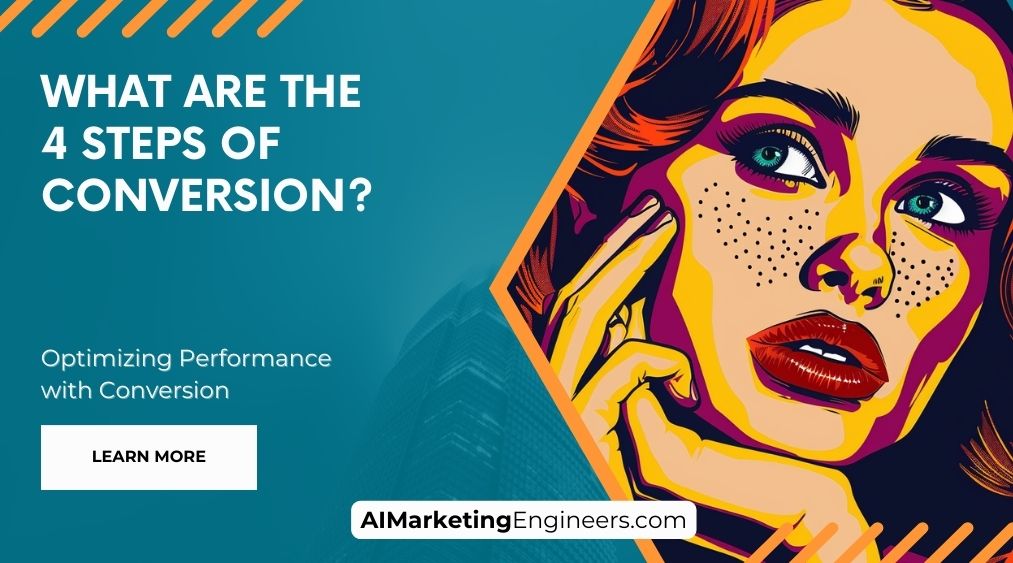Key Takeaways
✅ Awareness is your starting line. Without it, nobody even knows you’re in the race. It’s all about getting your name out there through savvy strategies like SEO and social media buzz. Did you know that consistent brand presentation across all platforms can increase revenue by up to 23%?
✅ Interest and Consideration are about digging into the customer’s world. What aches their brain at night? Show how your product or service can be the superhero they need. Remember, 47% of buyers view three to five pieces of content before contacting a sales rep.
✅ Desire and Action Turn. It’s close to the finish line but you need some smooth moves. Create an itch they just have to scratch – deals, sleek websites, a checkout as easy as pie. After all, a one-second delay in page response can result in a 7% reduction in conversions.
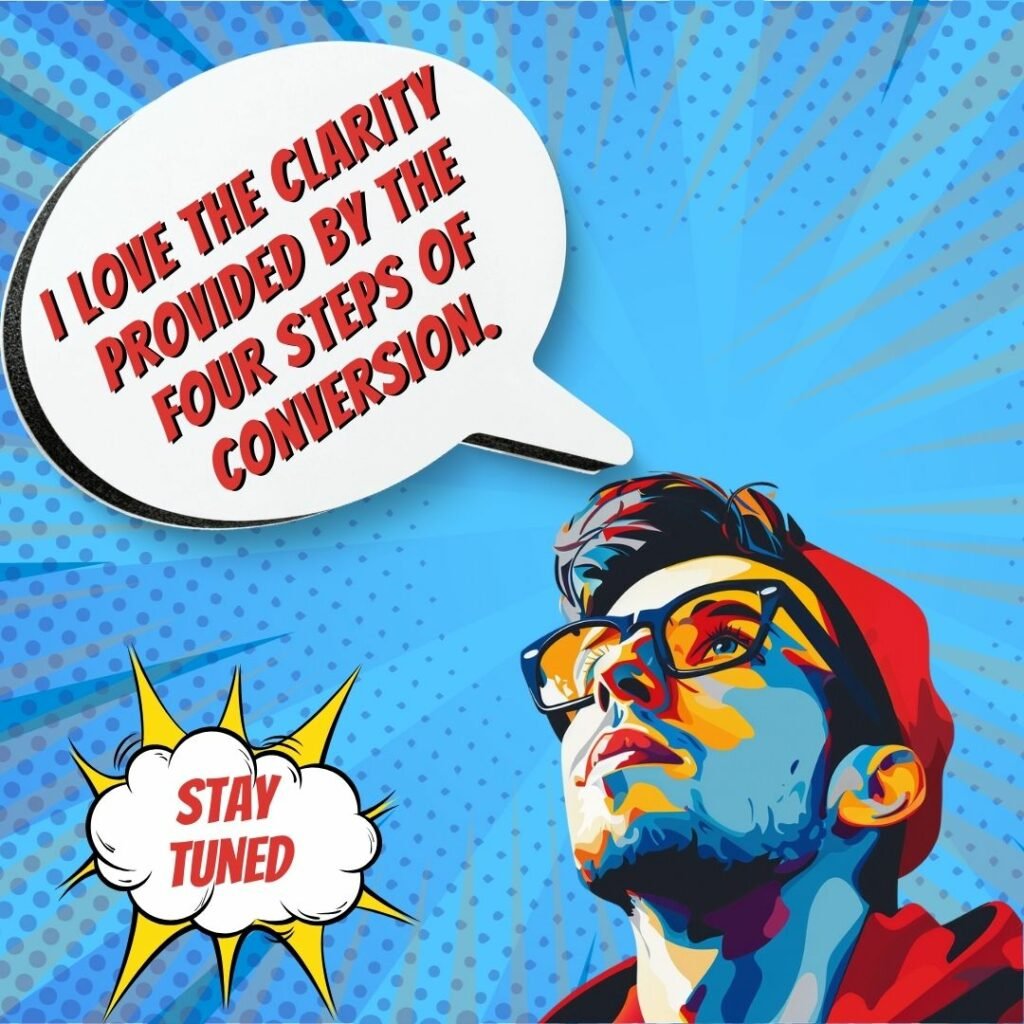
Introduction
What’s the secret sauce to turn casual browsers into loyal customers? Stick around as we slice and dice through the layers of the conversion cake, revealing the four must-have ingredients. Picture this: It’s your favorite store, they’ve got just what you need, and they understand you better than your best friend. That’s the feeling you want to give your visitors at every stage!
In ‘Mastering Conversion: A Comprehensive Guide to the Four Essential Steps’, we’re going to take a journey through the bustling streets of the digital marketplace. We’ll start with how to make heads turn (Attract Visitors) and keep them glued to their screens (Engage Your Audience). Then, we’ll map out how to turn those nods of interest into thumbs up and firm handshakes (Convert Leads into Customers). Heck, we’ll even uncover the secrets of keeping them coming back for more, again and again (Retain and Delight Customers).
Each step is a new chapter in the story of your success – measured, refined, and designed to win hearts (and open wallets). So, are you ready to turn the page and transform your entire approach to selling online?
Top Statistics
| Statistic | Insight |
|---|---|
| Personalized Experiences: Can increase customer engagement by up to 8 times. (Source: Forrester Research) | Crafting a user journey that feels personal can significantly boost the connection between your brand and your audience. |
| Mobile Commerce: Nearly three-quarters of e-commerce sales. (Source: Statista) | If you’re not optimizing for mobile, you might be missing out on a gigantic portion of the market. |
| Ecommerce Conversion Rates: Top performers can achieve rates as high as 11.45%. (Source: WordStream) | The difference between average and top-performing websites could be tied to how they convert visitors into customers. |
| Customer Retention vs. Acquisition: Retaining an existing customer costs five times less. (Source: Invesp) | Focus on keeping the customers you’ve worked hard to acquire; their loyalty may cost less than you think. |

Attracting the Right Crowd
Getting the right kind of visitors to your website is a bit like hosting a dinner party. You want to invite guests who will not only enjoy the meal you’ve painstakingly prepared but also contribute to the evening’s conversation. To reel in these anticipative guests, your website needs to double up as the scent of a delicious meal wafting through the neighborhood. Employing good search engine optimization (SEO) ensures that when they’re wandering the digital streets looking for answers, it’s your door they find. Integrating social media marketing practices into your strategy is akin to sending out friendly invitations through word-of-mouth; it’s personal and engaging. Then there’s the more direct route: paid advertising can act as those bright and bold signs pointing towards your party, and once interested, the personalized touch in your email campaigns can be like the follow-up call to assure them they’re truly welcome.
Making Connections that Stick
Now, imagine your visitors have arrived. What’s going to keep them from just taking a quick look around and then leaving? Think of your website as a living room, you want to make it comfortable and inviting. No one enjoys a party where they can’t find the bathroom or the conversation circles are impenetrable. Similarly, simplify your website’s navigation to avoid confusion, and remember that adding interactive elements such as videos or quizzes can be likened to party games that break the ice and foster connection. It’s also about building credibility or trust. Showcasing glowing testimonials can resonate with your visitors just like a packed, happy party makes a passerby curious. These elements together ensure your visitors not just land on your page but engage with your content and brand.
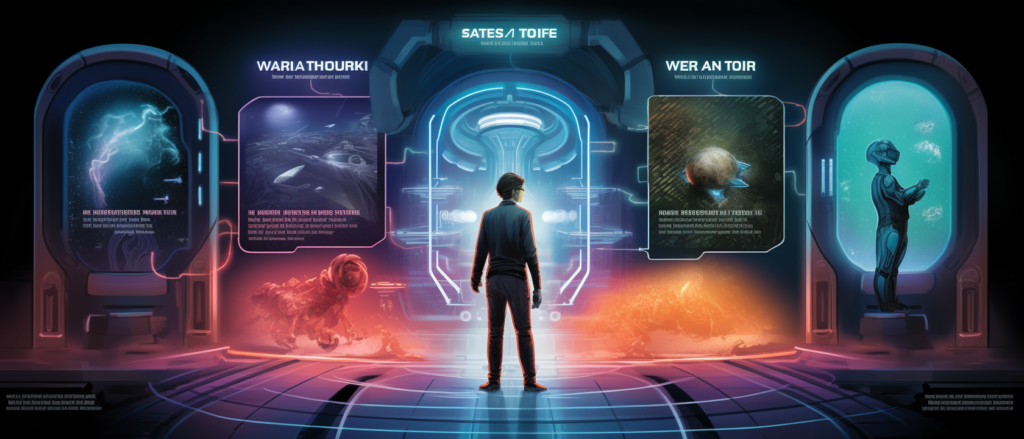
Turning Interest into Sales
With your guests mingling and enjoying the ambiance, you now want to turn their interest into action. It’s time for a toast – or in marketing terms, a conversion. This is where the subtleties of personalization come into play. Whether through tailored email marketing or targeted offers, you want to make your pitch as irresistible as the host offering a refill just before your glass runs dry. Your lead magnets need to be attractive, providing value compelling enough to keep guests from heading for the door. The right words on a call-to-action (CTA) button are like the perfect party favor; they’re simple, memorable, and make guests eager to grab one.
Keeping Them Coming Back for More
What makes someone want to return for your next gathering? The feeling of being appreciated and remembered. Post-purchase, customer retention is about continuing that special treatment, ensuring your customers know they are valued beyond the initial sale. It’s like sending thank you cards after a party, or even better, personalized offers and attention reminiscent of a heartfelt conversation. Implementing a loyalty program can feel like an exclusive invite to the next big event; it adds a touch of prestige and gives customers a reason to return and to bring their friends along.
The Importance of Conversion Rate Optimization
Finally, you must figure out whether your party was a hit. In the digital marketing world, this is where conversion rate optimization (CRO) steps in. Gathering data on your guests’ experiences allows you to tweak and refine future parties. It’s essential to track metrics like how many people engaged deeply with your site versus how many just took a quick glance and left. Observing what works and what doesn’t can lead you to adjust your strategy and potentially uncover more effective methods to attract and engage visitors.
As a host to potential customers, it’s your responsibility to spark interest, foster engagement, create satisfying experiences, and ensure guests depart with a desire to return. By focusing on these key steps, you pave the way for a thriving, dynamic website where every visit has the potential to turn into a long-lasting relationship. Are you ready to set the stage for your customer’s memorable journey?

AI Marketing Engineers Recommendation
Recommendation 1: Enhance user experience at every touchpoint: In the realm of the 4 steps of conversion – attention, interest, desire, and action – user experience is king. Did you know that a one-second delay in page response can result in a 7% reduction in conversions (Source: Neil Patel)? Speed up your website, make sure it’s mobile-friendly, and use clear, compelling calls to action. Better user experience often means more people moving through your conversion funnel.
Recommendation 2: Leverage social proof to build credibility and trust: In step two, where interest kicks in, real-time social proof can be a game-changer. Implementing pop-ups that show other customers purchasing or enjoying your product can increase conversions by up to 15% (Source: Fomo). Use testimonials, reviews, and user-generated content to show potential customers that people just like them trust your brand – this could be the nudge they need to move from interest to desire.
Recommendation 3: Utilize data analytics to personalize the customer journey: Are you familiar with how Netflix recommends shows? They use data analytics to know what keeps viewers hooked. Apply this to your 4 steps of conversion strategy. Deploy analytics tools like Google Analytics or Hotjar to track user behavior on your site and deliver personalized content and offers. This can lead to a 20% increase in sales opportunities (Source: Aberdeen Group). Personalization isn’t just fancy – it’s about connecting with your customers in a way that resonates with their needs and preferences.
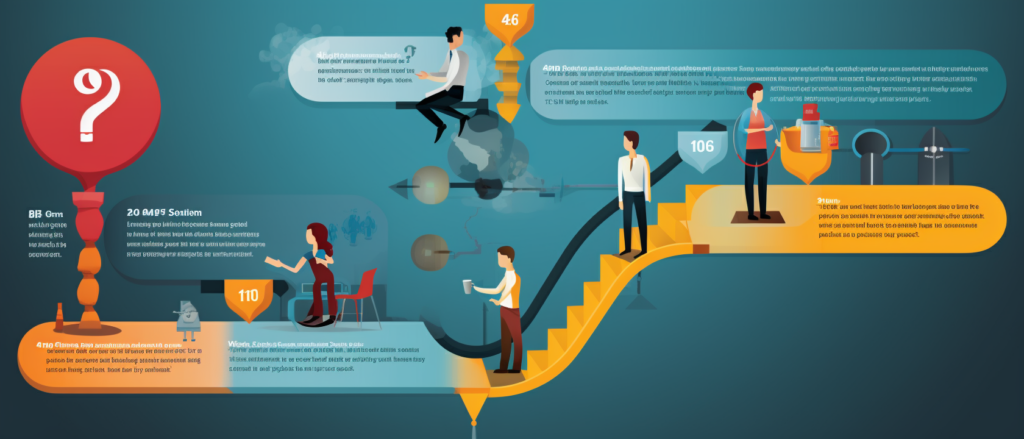
Conclusion
So, what does it really take to master the art of converting a casual browser into a loyal customer? It starts with those first critical steps: drawing visitors in, engaging with them, and then, the grand finale – turning those leads into customers. Picture your website as a cozy coffee shop. You’ve got the inviting aroma drawing people in—that’s your solid traffic-generation game. Then, the warm, vibrant vibe and the friendly chat with the barista—that’s how you make your visitors stick around and engage.
But what really matters is making sure they don’t leave without that cup of coffee. That’s where your personal touch in communication, your exclusive deals, and that perfectly placed call-to-action come into play. We’re not just making a sale; we’re building relationships here. And the plot doesn’t end with that first purchase—oh no. We’re in for the long haul—keeping customers coming back for more, cherishing their loyalty like gold, and always tuning in to their feedback.
Take a moment, breathe in that delicious scent of success. Are you ready to make these steps a reality in your own business narrative? Your visitors are out there, just waiting to be part of your story—open that door, welcome them in, and guide them through an experience they’ll want to relive, time and time again. Let’s make those conversions not just numbers, but stories of people finding exactly what they need, thanks to your business’s impeccable touch. How will you start writing that first chapter?
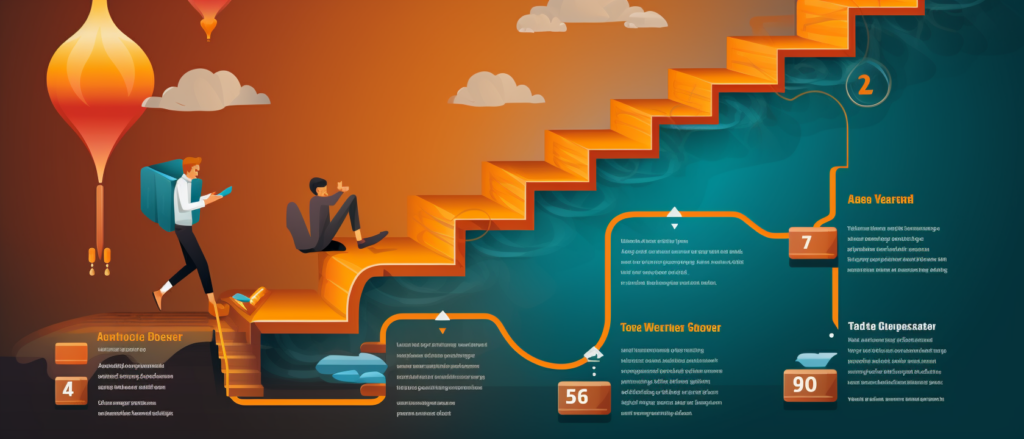
FAQs
Question 1: What is meant by “conversion” in this context?
Answer: Conversion is all about getting people who visit your website or interact with what you’re offering to take that next step. Think of it like convincing someone to not just window shop, but to walk into the store and buy something. It could be anything from buying a product, signing up for your newsletter, filling out a contact form, or downloading an e-book.
Question 2: Can you explain the four steps of conversion?
Answer: Sure! Imagine someone getting to know your product like meeting a new friend. First, you introduce yourself—that’s Awareness. Next, you chat and spark Interest. Then, they think, “Hey, I like this!”—that’s Desire. And finally, you ask them to hang out, and they say yes—that’s the Action phase. This is often summed up with the catchy term AIDA.
Question 3: How do I create awareness during the first step of conversion?
Answer: To get people’s attention, think about spreading the word like you would if you were throwing a big party. Use social media, SEO, ads, work with influencers, or write great content. The goal is to say “Hey, we’re here and we’ve got something cool!”
Question 4: Why is generating interest important in the second stage of conversion?
Answer: Once you’ve got attention, you need to keep it. Make them see how what you’ve got can make their life better, solve a problem, or simply bring them joy. It’s like telling someone why the book you’re recommending is so good—you’re not just saying “read this,” you’re explaining why it’s worth their time.
Question 5: How do I build desire during the third step of conversion?
Answer: Now, you’re getting them to want what you have. Share stories of users loving your product, show off all the praise and good reviews you’ve gotten. Make it irresistible by offering special deals or showing that others are enjoying your product. It’s kind of like seeing everyone else enjoying a great meal—makes you want to try it too!
Question 6: What are some best practices to encourage action in the final stage of conversion?
Answer: Make the last step a breeze. Clear up the path to that “Buy Now” or “Sign Up” button. Keep things quick and straightforward, whether it’s a smooth checkout or an easy-peasy form. Provide a nudge with free trials or guarantees to ease their minds. If others love it, show that off—it can be just the push they need!
Question 7: Are there any advanced tactics for optimizing conversions beyond these four steps?
Answer: Absolutely! Dive into personalizing your message, reminding folks about what they looked at with retargeting, trying out different approaches with A/B tests, checking where people click with heatmaps, or just straight up asking them what they think. These tricks can fine-tune your approach based on real feedback and data.
Question 8: Can you recommend resources for further learning about the 4 steps of conversion?
Answer: For those hungry for more knowledge—absolutely. Take a look at Neil Patel’s deep dives into conversion optimization, Unbounce’s comprehensive guide, or the HubSpot Academy’s course to buff up your skills.
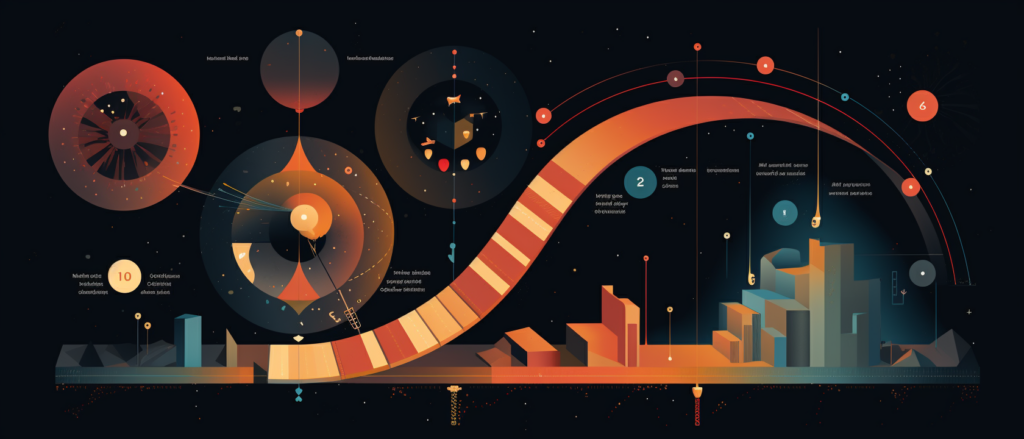
Academic References
- Solomon, M.R. (2015). Consumer Behavior: Buying, Having, and Being (11th ed.). Pearson Education. Solomon’s comprehensive textbook dives into the core of consumer behaviors, unraveling the psychological process behind a customer’s journey from attraction to purchase, a concept at the very heart of what conversion is all about.
- Li, H., Daugherty, T., & Biocca, F. A. (2013). Understanding Online Consumer Behavior: A Framework Integrating the Technology Acceptance Model and Flow Theory. Decision Support Systems, 54(4), 1578-1589.This insightful study pieces together the technology acceptance model (TAM) with Flow Theory to serve up a fresh perspective on online shopping. It delves into how enjoyment (flow) can seriously turn the tables on whether someone clicks ‘buy’.
- Yang, Y., Zhang, P., & Huang, C. (2016). An Empirical Study of Factors Affecting Consumers’ Adoption Decision on Mobile Payment Services. International Journal of Information Management, 36(5), 716-727.Ever wonder why some people are waving their phones at the cash register while others still reach for cash? Yang and team get to the crux of what makes people ditch the old ways and embrace mobile payments – trust, ease, and usefulness.
- Saleh, K. (2015). The Four Steps of Conversion Optimization: From Strategy to Execution. Harvard Business Review Digital Articles. Ready for a behind-the-scenes look at how websites work to win you over? Saleh breaks down the conversion optimization game into four strategic plays, emphasizing the game-changing role of good data and solid analysis.
